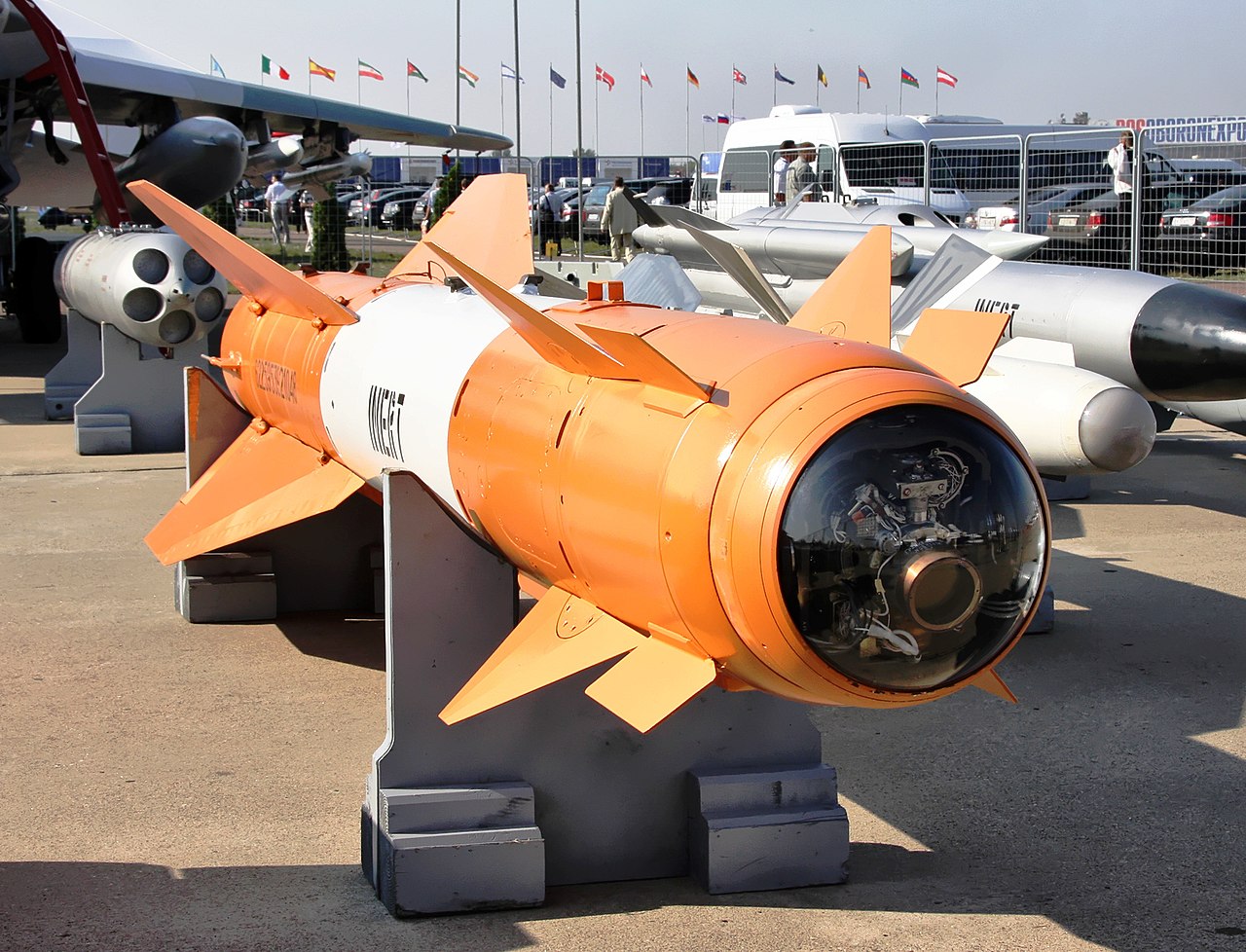On September 20, the Russian Defense Ministry released a video of the Su-34 fighter-bomber conducting sorties to attack the Armed Forces of Ukraine’s (AFU) military infrastructure with high-precision Kh-29 air-to-surface missiles.
Putin Has ‘Half A Million’ People At His Disposal To Fight Ukraine As Russia Opens Floodgates To Recruit Foreign Soldiers
Rubbing Salt Into Russian Wounds, US Official Hints At Transfer Of World’s ‘Most Powerful’ Tanks, ‘Super Striker’ ICVs To Ukraine
Su-34 aircraft operators used high-precision Kh-29 air-to-surface missiles to attack enemy ground targets and air defense systems at a distance of up to 30km, Tass reported, citing the ministry.
“The crews are carrying out missions to strike the adversary’s ground targets and air defense systems. These high-precision weapons make it possible to fulfill combat tasks using various targeting systems from great distances,” a deputy commander of an air squadron said.
“Currently, a Kh-29T missile is being presented. The last task it implemented was the strike on a stronghold located in the woods,” he added.
Минобороны опубликовало кадры подготовки вылета экипажей истребителей-бомбардировщиков Су-34 с высокоточными ракетами класса "воздух-поверхность" Х-29:https://t.co/LCXztVo0TF
Видео: Минобороны России pic.twitter.com/JoN9A3NXWU
— ТАСС (@tass_agency) September 20, 2022
The report highlighted that navigators must complete special training before using the Kh-29 missiles.
“We target [it], then, once a link is established, the missile’s warhead acquires a target from a distance of, say, 20-30 kilometers,” a Navigator said. He added that the missile then goes directly to the target.
The Su-34 fighter-bomber aircraft is intended for precise missile and bomb attacks on an enemy’s ground assets at operating and tactical depth in addition to striking an opponent’s air targets.
Not Impressive! Top US Commander ‘Rubbishes’ China’s J-20 Threat; Says ‘Not Anything To Lose Sleep Over’
World’s 1st Bomber Of 21st Century — B-21 Raider Set To Be Unveiled By US Air Force Before The End 2022
This aircraft has frequently been used by Russia in Ukraine. While it undoubtedly gave Russian forces an edge in carrying out precise missile and bomb strikes, it also sustained some losses during the conflict.
Previously, a Ukrainian citizen reportedly shot down a Russian Su-34 fighter jet with his rifle, for which the Ukrainian armed forces later presented him with a medal. In July, it was reported that Russia accidentally downed one of its own powerful Su-34M fighter bombers.

The design for the Sukhoi Su-34, also known by its NATO code name Fullback, has been in the works for a very long time. It was proposed as a replacement for the Su-24 Fencer.
The Su-34, like most other contemporary Russian fighters, was derived from the air-superiority Su-27 Flanker, which was intended to rival American F-14 Tomcat and F-15 Eagle aircraft of the fourth generation.
It first took to the skies in April of 1990. However, it didn’t put into service until March of 2014.
Despite having air superiority origins, the Su-34’s design was significantly altered to make it more effective in an attack role. It has a 30mm GSh-30-1 internal cannon and 12 hardpoints under the wings and beneath the fuselage that can hold up to 17,630 pounds of ammunition.
Kh-29 Air-To-Surface Missile
The Kh-29 is a Soviet-era air-to-surface missile with a range of 10-30km. It is commonly carried by tactical aircraft like the Su-24, Su-30, MiG-29K, and the “T/TM” variants of the Su-25, offering those planes an enhanced standoff capability.
It carries a massive warhead of 320 kg and has the option of laser, infrared, active radar, or TV guidance. It is similar to the AGM-65 Maverick missile used by the US but has a much heavier warhead.
The Kh-29 can be deployed against ships up to 10,000 tons, hardened aircraft shelters, and concrete runways in addition to bigger combat targets and infrastructures such as commercial buildings, depots, and bridges. The Kh-29TE is the extended-range version of the missile.

It is the only air-to-ground weapon developed by Ukraine’s Molniya design bureau. The missile began to take shape in the late 1970s, but Vympel, a Russian research and production company, later took over the development of the Kh-29.
The missile was fired for the first time in 1976, and after thorough testing, the Kh-29 was approved for use in 1980.
The Molniya R-60 (AA-8 “Aphid”) and the Kh-29 share a basic aerodynamic design. The Kh-25 (AS-10 “Karen”) provided the laser guidance head, while the Kh-59 (AS-13 “Kingbolt”) provided the TV guidance, both attached to a sizable warhead.
It has a passive television self-homing “eye” that broadcasts an image to an indicator aboard the carrier aircraft before launch. In 1980, the Kh-29 was put into service with the Russian air force and subsequently widely exported.
- Contact the author at ashishmichel@gmail.com
- Follow EurAsian Times on Google News




